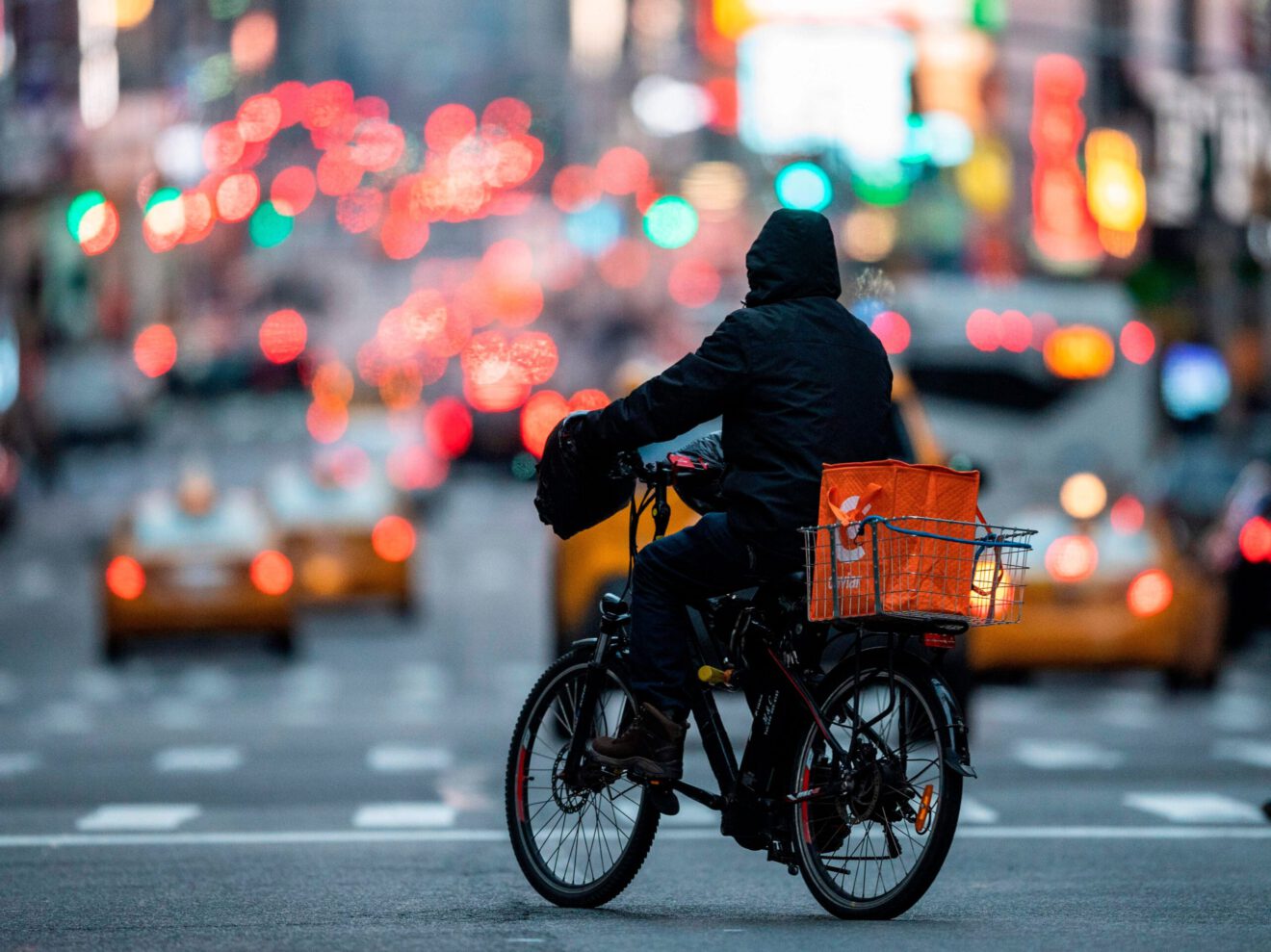Third-party delivery services were growing, and facing growing pains, before the pandemic sent shockwaves through the restaurant industry and forced eateries to close dining rooms and focus exclusively on takeout and delivery services.
For companies including DoorDash, Grubhub, Postmates and Uber Eats, the pandemic provided new opportunities for food delivery and, in some cases, amplified existing concerns over fees and transparency in their dealings with restaurant owners and consumers.
In November 2019, Washington, D.C.’s attorney general filed a lawsuit alleging DoorDash misled customers about how their tips were allocated to drivers. By the time the case was filed, the company had changed its policy and delivery workers now receive 100% of their tips, in addition to their base pay.
More recently, in April of this year, three consumers in New York City filed a proposed class-action lawsuit against GrubHub, DoorDash, Postmates and Uber Eats, Reuters reported. The lawsuit challenges a practice of requiring restaurants to charge the same price for delivery and dine-in, while requiring the restaurants to pay fees as high as 40% for their delivery services.
Delivery companies made efforts during the pandemic to work with restaurants to make fees more manageable, but the companies also face shareholder pressure to make a profit. And some major cities, including New York City and Los Angeles, moved to temporarily cap the amount of fees third-party delivery services could charge.
Pandemic puts delivery in the spotlight
About a year ago, a survey done by US Foods found that the average consumer had downloaded two food delivery apps and used them three times monthly, with 54% seeking a specific restaurant and 46% using the app to browse for ideas. At that time, many restaurant owners and operators were weighing whether the cost of using third-party services, which sometimes hit 30% or more, made sense for business already operating on tight margins.
Then the coronavirus outbreak hit the US in March, shuttering dining rooms across the country and making third-party delivery services vital partners for many operators, NPD Group Vice President and Food Industry Advisor David Portalatin said.
“When all of a sudden your only means of doing business is off-premise, when you don’t have a drive-thru, third parties are your lifeline,” he said.
And figuring out the financial model that makes the most sense for delivery services, restaurant owners and consumers could be an ongoing process.
“Here’s what we know,” Portalatin said. “Somebody has to pay for the delivery. Right now, it’s some combination of restaurant margins, customers paying a premium or the companies subsidizing the cost. We don’t know yet where that will balance out.”
That said, it’s clear that some consumers were willing to pay for the convenience of delivery before the pandemic and that’s likely still the case.
Restaurant sales through third-party services more than doubled in April from the same month last year, Portalatin said.
Another pre-pandemic study forecast a 7.5% annual growth rate for online food delivery sales from 2020 through 2024. According to the report from Statista, platform-to-consumer sales were growing faster than direct online sales by restaurants, and the two channels were on track to be even by 2024.
What is the future of food delivery?
It’s likely those numbers will grow faster post-pandemic, but it’s not yet clear whether third-party services are still on track to grow faster than restaurant-to-consumer digital sales.
As the pandemic has forced restaurants to do more with less to stay afloat, some have turned to tech tools to develop in-house delivery options and drive down costs, The Wall Street Journal reported on Saturday.
The story reported stats from the National Restaurant Association showing 3% of restaurant members, all quickserve and fast-casual concepts, had grown sales in April as a result of recreating menus and implementing technology tools allowing them to sell directly to consumers.
Whether restaurant owners stick with third-party services or build in-house options, demand for delivery is expected to continue growing, Portalatin said.
“The underlying trend even before the pandemic was that consumers increasingly wanted to consume meals at home,” he said. “We’ve been seeing this shift for several years, and obviously it dramatically accelerated when we were all ordered to stay at home and restaurants could only do off-premise.”
Ultimately, that consumer demand is what will drive long-term food delivery trends.
“The American consumer always wins,” he said. “They’re the most powerful economic force on the planet. If they’re saying ‘We value delivery of food to our homes,’ the business model will find a way to satisfy that need.”
Related stories:
- How will the coronavirus outbreak affect the plant-based food industry?
- Restaurants get creative with off-premises dining to create a sense of place
- Nonalcoholic drink trend shows no sign of slowing down
_____________________________________
If you enjoyed this article, sign up for Consumer Brands SmartBrief or Restaurant SmartBrief to get news like this in your inbox, or check out all of SmartBrief’s food and travel newsletters as we offer more than 30 newsletters covering the food and travel industries from restaurants, food retail and food manufacturing to business travel, the airline and hotel industries and gaming.
